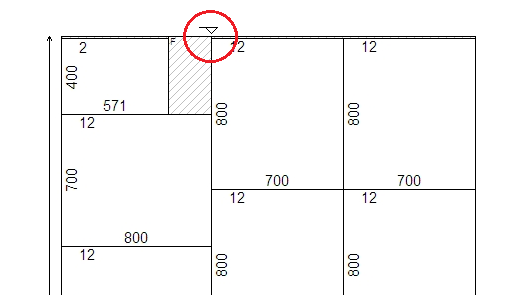Cutting patterns
The multiplicity of restrictions and requirements for the two-dimensional cutting plane can also generate an infinity of different cutting schemes for the same order. Some of these restrictions/requirements are: thickness of the saw, squareness of the sheet, direction of the grain/groove of the material, sequence of cuts, determination of cutting phases, mixed arrangements, preference for the initial cut (horizontal or vertical) etc. A stock with plates of very varied dimensions, such as the inclusion of scraps, and/or a project with a great variety of parts, will obviously increase the complexity of the problem and may generate unexpected cutting plans – but this result, in itself, does not constitute a pattern.
By default, every cutting plane generated by Corte Certo offers at least one cut from outside to outside, which allows transforming a larger rectangle into two smaller ones. And these two other rectangles, if necessary, must also contain at least one cut capable of dividing them into even smaller rectangles, until the entire sheet or coil cutting process is completed. In the printed plans of Corte Certo these main lines are indicated with a small arrow:
Guillotine cut pattern:A cutting plane that contains at least one guillotine cut (or guillotine cut). It is the one in which there is no interruption, that is, it goes from one side to the opposite side of the plate. In the first example below, there are two options like this for the initial cut – one horizontally and the other vertically, always generating two new rectangles, each with at least one guillotine cut.
Non-guillotine cutting pattern: is when guillotine cutting does not occur, because at least one of the cutting lines is interrupted. This type of arrangement of parts can eventually generate better use of the material, but in this case, it will have to be cut with the same tools indicated for cutting irregular pieces. To use saws or guillotines, the cutting plane will have to be corrected.
Guillotine and non-guillotine patterns also apply to coils, which may optionally require planes for longitudinal cuts (slitter). See also: Unstopper.
Even without the need for fully longitudinal or transverse cuts, the user may also prefer that the initial cuts are horizontal or vertical, as standard.
The cutting phases can also define the pattern for cutting schemes.



